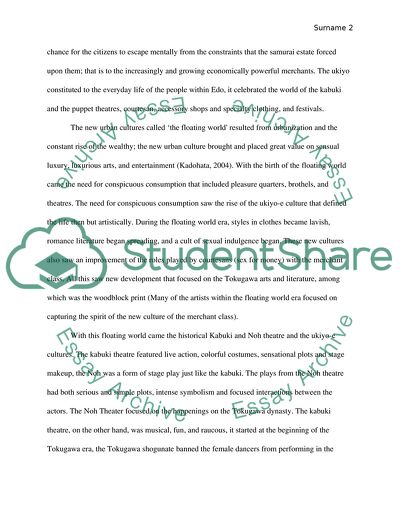Cite this document
(The Tokugawa Floating World and the Ukiyo-E Culture Essay Example | Topics and Well Written Essays - 2500 words, n.d.)
The Tokugawa Floating World and the Ukiyo-E Culture Essay Example | Topics and Well Written Essays - 2500 words. https://studentshare.org/culture/1872103-the-tokugawa-floating-world
The Tokugawa Floating World and the Ukiyo-E Culture Essay Example | Topics and Well Written Essays - 2500 words. https://studentshare.org/culture/1872103-the-tokugawa-floating-world
(The Tokugawa Floating World and the Ukiyo-E Culture Essay Example | Topics and Well Written Essays - 2500 Words)
The Tokugawa Floating World and the Ukiyo-E Culture Essay Example | Topics and Well Written Essays - 2500 Words. https://studentshare.org/culture/1872103-the-tokugawa-floating-world.
The Tokugawa Floating World and the Ukiyo-E Culture Essay Example | Topics and Well Written Essays - 2500 Words. https://studentshare.org/culture/1872103-the-tokugawa-floating-world.
“The Tokugawa Floating World and the Ukiyo-E Culture Essay Example | Topics and Well Written Essays - 2500 Words”. https://studentshare.org/culture/1872103-the-tokugawa-floating-world.


